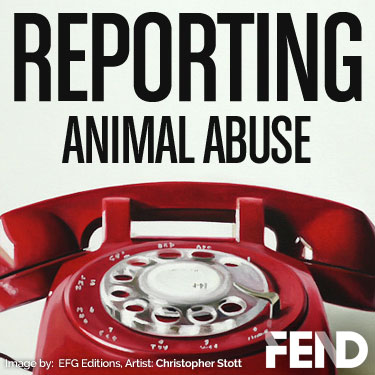When one considers the contours of a family, the warmth of shared experiences and the bonds of love often emerge as key elements. However, not all familial relationships are steeped in harmony. The presence of a pet in these dynamics can create a paradox — a symbol of unconditional affection amidst the shadows of conflict. Reporting pet abuse within the family becomes a complex and heart-wrenching dilemma, marked by profound emotional stakes and moral quandaries.
Imagine a delicate tapestry, woven with intricate threads of loyalty, affection, and responsibility. Within this tapestry, the life of a pet may serve as a vital thread, bringing both beauty and, at times, strains of anguish. This guide seeks to traverse the labyrinthine pathways of reporting abuse while grappling with the poignant reality of familial ties, blending altruism with practicality.
Understanding the Nature of Abuse
Before embarking on the journey of reporting suspected abuse, it is imperative to delineate what constitutes pet abuse. This encompasses physical harm, neglect, emotional maltreatment, and inadequate provision of essential needs such as food, water, shelter, and veterinary care. Recognizing manifestations of abuse is not merely an academic exercise; it requires vigilance and a keen eye for the changes in a pet’s behavior. Subtle signs, such as sudden aggression or withdrawal, may indicate deep-seated trauma.
Pets, often perceived as extensions of their owners’ emotional landscapes, can suffer silently. Whereas humans possess verbal skills to express discomfort, animals communicate through body language, which can be elusive yet revealing. A furrowed brow, an averted gaze, or a tucked tail can convey volumes. Understanding these signs will arm the observer with the perceptive tools necessary to identify potential abuse and set the stage for taking action.
The Emotional Turbulence of Decision-Making
Deciding to report family members for suspected pet abuse is akin to standing on the precipice of a cliff, teetering between compassion for the animal and loyalty to family. The emotional turbulence whirls within — fears of familial rejection, accusations of betrayal, or potential alienation must be navigated carefully. Yet, the crux of the decision rests on an unwavering principle: the safety and well-being of the animal are paramount.
Consider the metaphor of a lighthouse. Standing tall amidst stormy seas, it guides those lost towards safety. When faced with the murky waters of domestic discord, the responsibility to illuminate the path for a voiceless creature falls to compassionate observers. Yet, this light can also reveal troubling truths, forcing confrontations that may unearth resentment and anxiety.
Gathering Evidence: A Preliminary Step
Prior to initiating any reports, one must systematically compile evidence of suspected abuse. This process involves empathetic observation and detailed documentation. Take note of specific incidents, peculiar behavior patterns, or inadequate living conditions. Visual evidence, such as photographs or videos, can significantly bolster a case, providing irrefutable documentation of neglect or maltreatment.
Utilizing a diary to chronicle observations creates an invaluable resource. In addition to establishing a timeline, it can assist in identifying a pattern of behavior that substantiates claims. Assembling such evidence is not merely a legal maneuver; it demonstrates a commitment to the animal’s welfare, encapsulating the depth of concern felt by the observer.
Understanding Reporting Mechanisms
Once the decision is made to proceed, familiarity with local reporting mechanisms is essential. Most communities have specific organizations or shelters dedicated to animal welfare, equipped with resources to assist in cases of suspected abuse. These organizations often provide confidential hotlines, offering support for individuals grappling with moral dilemmas.
Reaching out to a local animal control agency or humane society can yield critical information on the proper procedures for reporting. It is crucial to highlight that many of these organizations are not adversaries of familial bonds; rather, they aim to safeguard the well-being of both the pets and the families involved. Furthermore, knowledge of existing laws regarding animal welfare can empower individuals to act decisively yet compassionately.
Anticipating Familial Reactions
Reporting pet abuse can precipitate a cascade of reactions from family members, encompassing everything from anger and denial to understanding and remorse. Anticipating these reactions can enable a person to prepare mentally and emotionally for the aftermath of their decision. In some cases, a family member may feel threatened by external involvement, perceiving it as an infringement on their rights. Conversely, a more positive reaction may unveil a pathway for constructive dialogue regarding the care of the pet.
Ultimately, it is essential to maintain focus on the animal’s welfare. The decision to report should not be cast as an indictment but rather as a crucial intervention aimed at ensuring a safe, nurturing environment. Framing the discussion in this manner can foster constructive conversations, reducing the likelihood of defensive postures from family members.
Fostering Healing and Compassion
In the wake of reporting abuse, the focus should shift towards healing — both for the abused animal and the family. Open dialogues about animal care can cultivate a culture of empathy, underscoring the shared responsibility of guardianship. Education about animal behavior, collective participation in care, and community involvement may serve as avenues for reconciliation and healing.
Empowerment is a pivotal element in this journey. By making the hard decision to report abuse, individuals become architects of change, paving the way for healthier family dynamics and the protection of innocent lives. The ultimate goal is to transform the pain of injustice into a renewed commitment to compassion and understanding, not only for pets but within the familial unit.
Through this multifaceted exploration of reporting pet abuse within the family, the path forward emerges; one that requires courage, introspection, and an unwavering commitment to the voiceless beings that depend on us. In the intricate dance of family ties and animal love, each step taken towards fostering a safer environment for pets becomes a vital contribution to the larger societal fabric of compassion.






